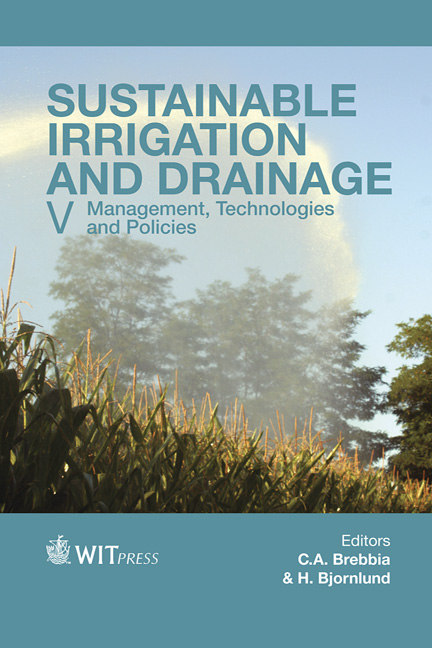A Tool For Detecting Crop Water Status Using Airborne High-resolution Thermal Imagery
Price
Free (open access)
Transaction
Volume
185
Pages
7
Page Range
25 - 31
Published
2014
Size
959 kb
Paper DOI
10.2495/SI140031
Copyright
WIT Press
Author(s)
J. Bellvert, P. J. Zarco-Tejada, J. Girona, V. González-Dugo, E. Fereres
Abstract
Knowledge on crop water status at the orchard scale is necessary for the efficient management of irrigation water. Canopy temperature has long been recognized as a plant water status indicator, and crop water stress index (CWSI), which is obtained from canopy temperature could be used as a tool for remotely detecting plant water status from airborne high-resolution thermal imagery. In 2012, CWSI baselines for olive and peach trees were derived from infrared thermometer data. An aircraft equipped with a thermal sensor flew over two orchards acquiring high-resolution thermal images. At the same time, leaf water potential (ΨL) was measured in eighteen trees per specie. Relationship between the difference of canopy and air temperature (Tc-Ta) and ΨL had a R2 of 0.74 and 0.82, for peach and olive, respectively. CWSI ranged from zero to one and showed a significant correlation with ΨL. Maps of estimated ΨL (derived from CWSI - ΨL relationships) were able to detect the spatial variability of plant water status within the orchards, and may be a feasible tool for irrigation purposes.
Keywords
remote sensing, leaf water potential, crop water status, crop water stress index





